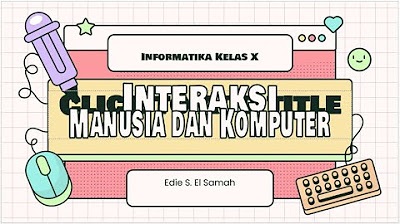Command Line V/s GUI - Linux Tutorial
Summary
TLDRThis tutorial introduces users to the differences between managing files through the Command Line Interface (CLI) and Graphical User Interface (GUI), with a focus on the CLI in Linux. It explains how the CLI offers efficiency and flexibility for tasks such as moving files and creating accounts, which can be completed faster compared to the GUI. The tutorial covers basic commands like PWD (Print Working Directory) and CD (Change Directory), including how to navigate through directories using absolute and relative paths. The goal is to help users understand and effectively use the terminal for file management in Ubuntu.
Takeaways
- 😀 The most frequent task performed on a computer is managing files, not gaming or browsing the web.
- 😀 There are two main ways to manage files: the Command Line Interface (CLI) and the Graphical User Interface (GUI).
- 😀 Most beginners and even experienced users prefer the GUI, but the CLI has distinct advantages that will be discussed in this tutorial.
- 😀 CLI offers flexibility, and its commands provide options not available in GUI mode.
- 😀 CLI can accomplish tasks with fewer steps compared to GUI, for example, creating a new account can be done with one command in the CLI instead of several GUI steps.
- 😀 Moving large numbers of files is faster in the CLI, using regular expressions, while GUI-based methods can take hours.
- 😀 The CLI loads faster and uses less system memory, which is important in performance-critical situations like server maintenance.
- 😀 GUI is useful for tasks that require visual representations, such as editing images, creating sketches, and viewing performance graphs.
- 😀 In Ubuntu, the terminal can be launched by searching for 'Terminal' in the dash or using the shortcut Ctrl+Alt+T.
- 😀 The `PWD` command in the terminal shows the Present Working Directory, indicating the folder you're currently in.
- 😀 The `CD` command allows you to change directories, and using absolute or relative paths helps in navigating the file system efficiently.
Q & A
What is the most frequent task performed by an average computer user?
-The most frequent task performed by an average computer user is managing files, including browsing, creating, moving, and deleting files.
What are the two main ways to manage files on a computer?
-The two main ways to manage files on a computer are using the Command Line Interface (CLI) like the terminal in Ubuntu or using the Graphical User Interface (GUI) like the file manager on any operating system.
Why do some users prefer the Command Line Interface (CLI) over the Graphical User Interface (GUI)?
-Some users prefer the CLI over the GUI because it is more flexible, offers faster performance, consumes less RAM, and can complete tasks more efficiently, such as moving hundreds of files in seconds with regular expressions.
What is one key difference between CLI and GUI in terms of system resource consumption?
-The CLI loads faster and uses significantly less RAM compared to the GUI, which is important when working in situations where system performance is critical, such as on servers.
How can a user launch the Command Line Interface (CLI) on Ubuntu?
-A user can launch the CLI on Ubuntu by either clicking on the Dash and typing 'Terminal' to open it, or by using the shortcut key combination 'Ctrl + Alt + T'.
What does the 'PWD' command do in the terminal?
-The 'PWD' (Print Working Directory) command displays the current directory the user is working in within the terminal.
What is the purpose of the 'CD' command in the terminal?
-The 'CD' (Change Directory) command allows the user to navigate between different directories within the file system in the terminal.
What are absolute and relative paths in computing?
-An absolute path is the full address of a file or directory, starting from the root directory, while a relative path specifies a file or directory's location in relation to the current directory.
How do you navigate between multiple directories using the 'CD' command?
-To navigate between multiple directories, you can specify the complete path using the 'CD' command, or use relative paths for quicker navigation within the current directory structure.
What is the difference between navigating to the root directory and the home directory in Linux using the 'CD' command?
-To navigate to the root directory, you use 'CD /', whereas to navigate to the home directory, you can use 'CD' or 'CD ~'. The root directory is denoted by a forward slash ('/'), while the home directory is specific to the user.
Outlines

This section is available to paid users only. Please upgrade to access this part.
Upgrade NowMindmap

This section is available to paid users only. Please upgrade to access this part.
Upgrade NowKeywords

This section is available to paid users only. Please upgrade to access this part.
Upgrade NowHighlights

This section is available to paid users only. Please upgrade to access this part.
Upgrade NowTranscripts

This section is available to paid users only. Please upgrade to access this part.
Upgrade NowBrowse More Related Video
5.0 / 5 (0 votes)





